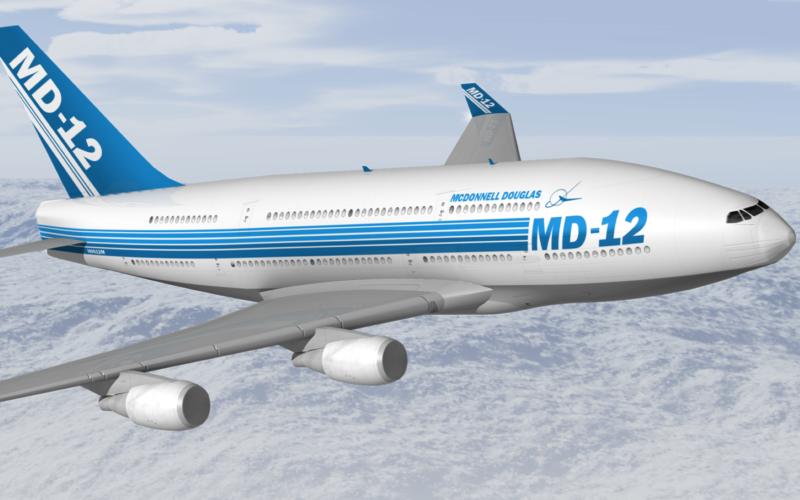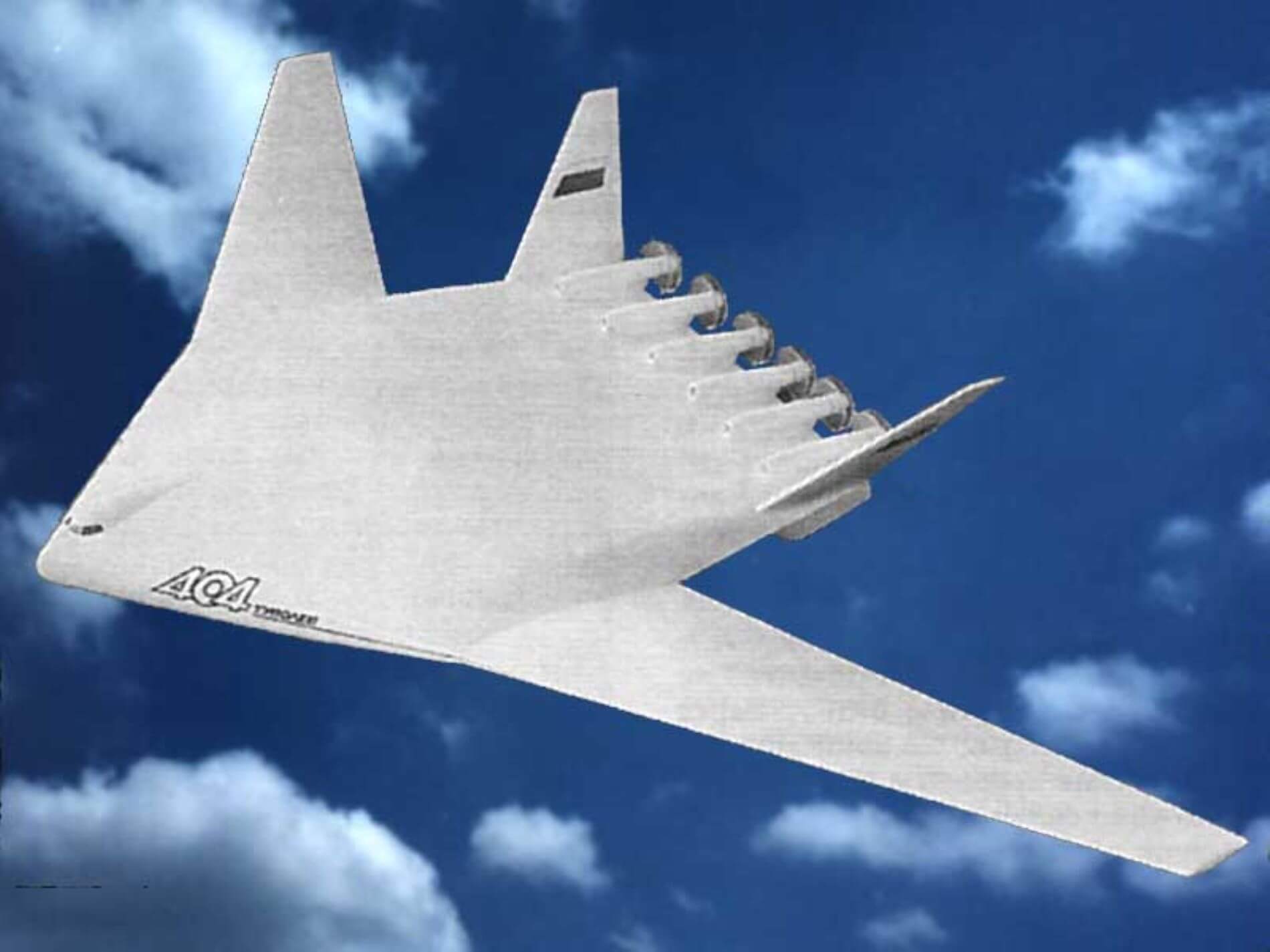As airlines retire their legendary Boeing 747s, and the production of Airbus A380 – the largest passenger airplane ever built – is almost over, we are nearing the end of an era of the giants. But there was a different time when the hub-and-spoke model reigned supreme, and manufacturers competed with their projects to build airliners of truly gargantuan proportions.
There is only one criterion for this list: the raw amount of seat manufacturers promised to cram into the plane. No planes that have been built are included here, but all of them have to have been in the design phase, just to avoid purely fictional ideas.
10. Proposals to stretch existing single-decker airliners to fit 450 seats
.jpg)
Non-stretched B777X (Dan Nevill / Wikipedia photo)
More of an honorable mention than a real entry, really. Before entering the world of engineers’ fantasy, we have to mention several real wide-body aircraft that could have – or maybe will have – their body lengthened to expand into the realm of 450 seats: the Soviet-built Ilyushin Il-86’s high-capacity version was reportedly tested in 1982 and could fit 450 passengers, but has never entered service. CRAIC CR929, troubled Russian-Chinese airliner of the future, has a proposed 440-seat all-economy variant. In an eternal battle of the titans, Airbus’ proposal to stretch their A350-1000 to 455 seats in 2016 was met with Boeing’s 777X-10 that would also fit 450 passengers. Not one of these ideas were ever fully completed, and the current economic situation makes the prospect of them ever seeing the light of day doubtful.
9. Tupolev Tu-304: 500 seats
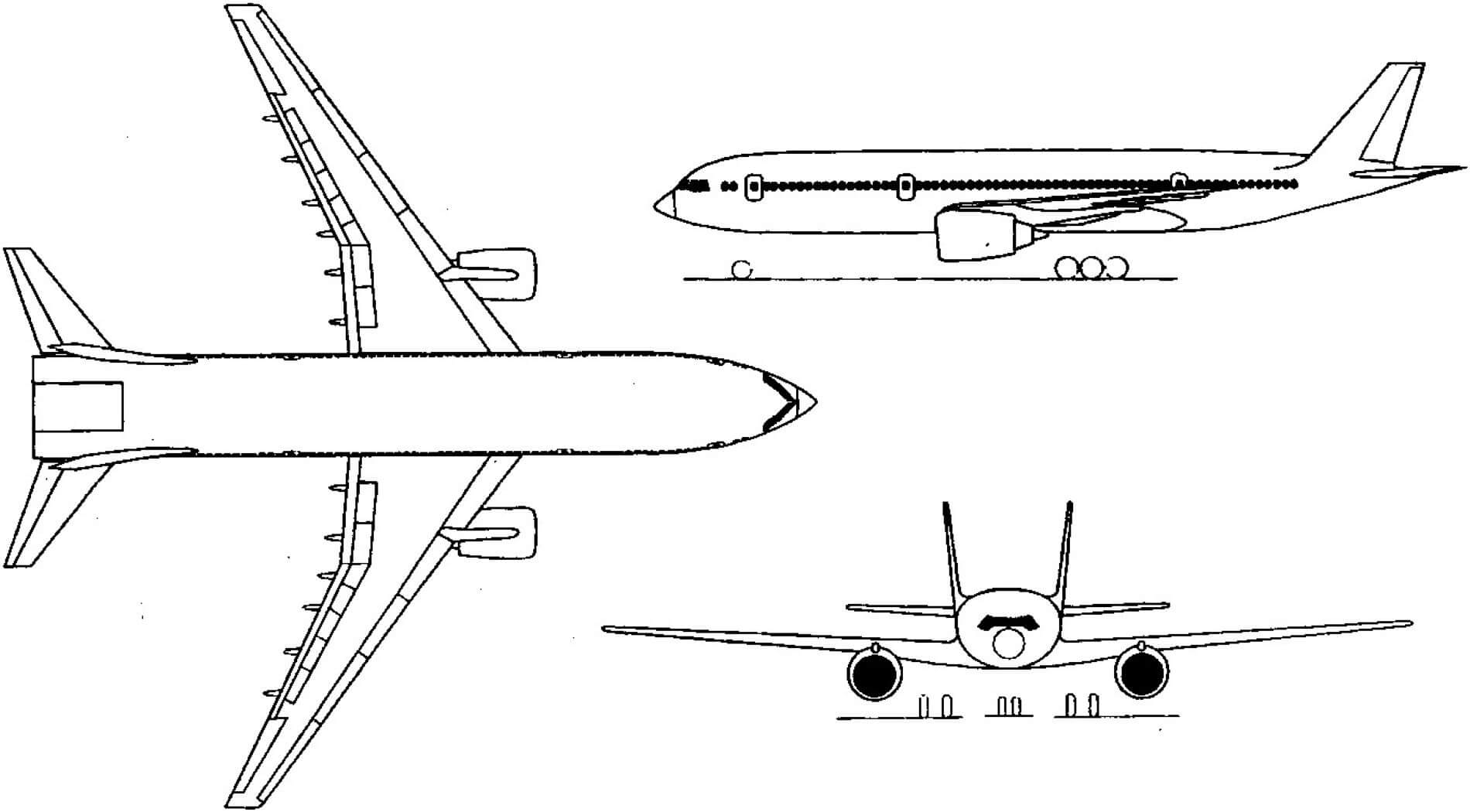
Tu-304 scheme (Aviadejavu.ru photo)
Tupolev’s attempt to enter the new twinjet wide-body airliner race, pioneered by Airbus A330 and Boeing 777, came in the early 90s. The plane – should it have ever been completed – would be slightly smaller than its competitors, with a length of 62 meters and a wingspan of 57 meters (the 777-200 spanned 63 meters and 60 meters, respectively), but would have been endowed with a peculiar oval cross-section fuselage allowing for larger seating capacity.
The aircraft was supposed to have been in service by the early-2000s, but like many Russian projects of the time, it failed to leave the drawing board due to a shortage of funding. As the new millennium started, there have been attempts to revive it as Frigate Ecojet, with a fuselage scaled down to a 300 seat capacity. As of late 2020, there has been no news of the development for several years.
8. McDonnell Douglas MD-12: 511 seats
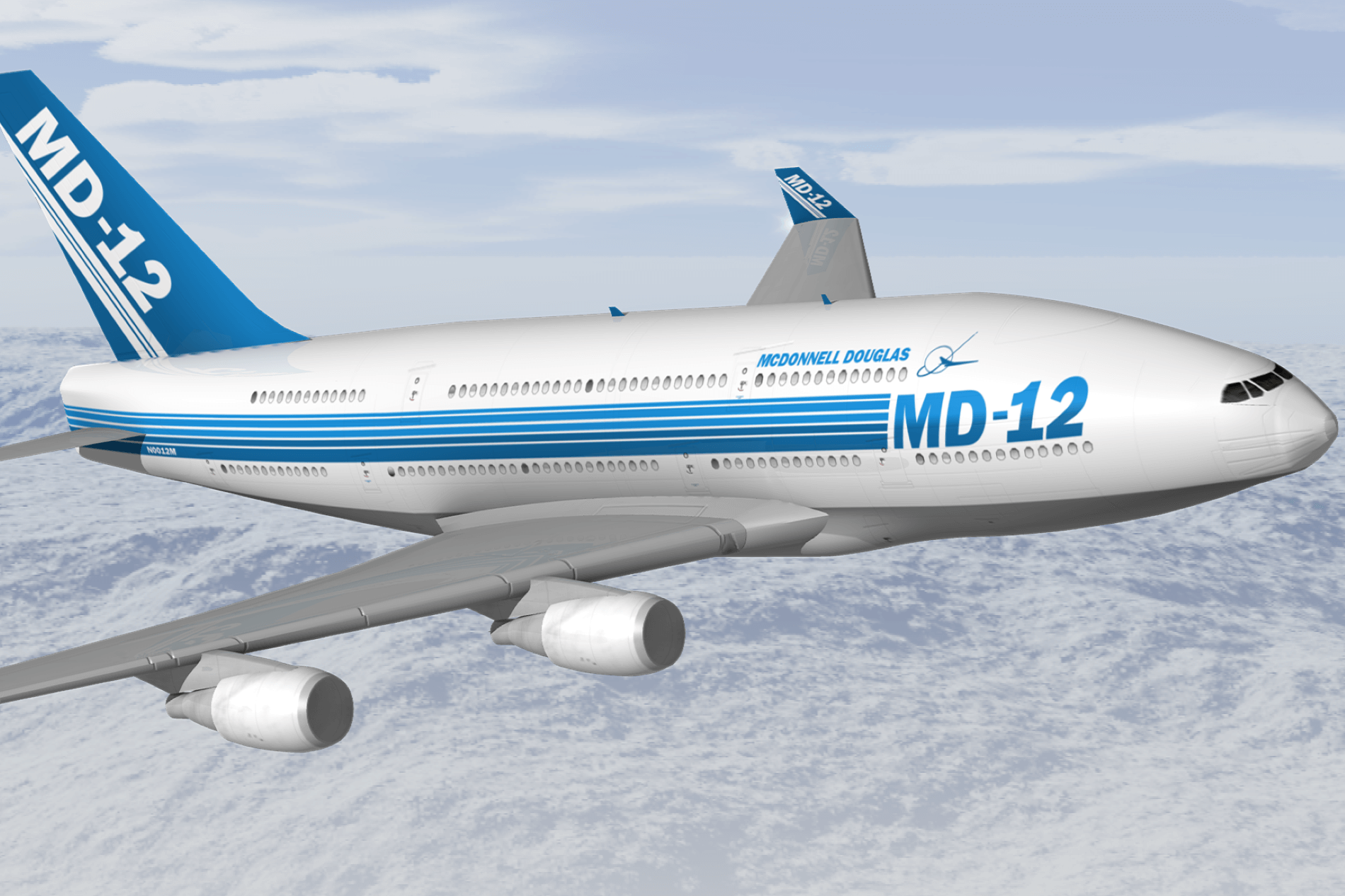
In an attempt to compete with the Boeing 747, which has monopolized the long-haul large-capacity market, McDonnell Douglas started stretching their MD-11, the last of the great trijets. An additional engine was added somewhere in the process, turning the project into the four-engined double-decker, slightly smaller than Airbus A380. The project was approved in partnership with Taiwan Aerospace, yet despite attracting a lot of attention, it did not receive a single order. Airlines had no interest in the aircraft which was just incrementally larger and way more expensive than a B747, as even in all-economy configuration MD-12 would only fit 511 seats.
Looking in retrospect, had the MD-12 have been more successful, it would probably have had a stretched version with a capacity more suitable for a plane of its class.
7. McDonnell Douglas MD-XX: 515 seats
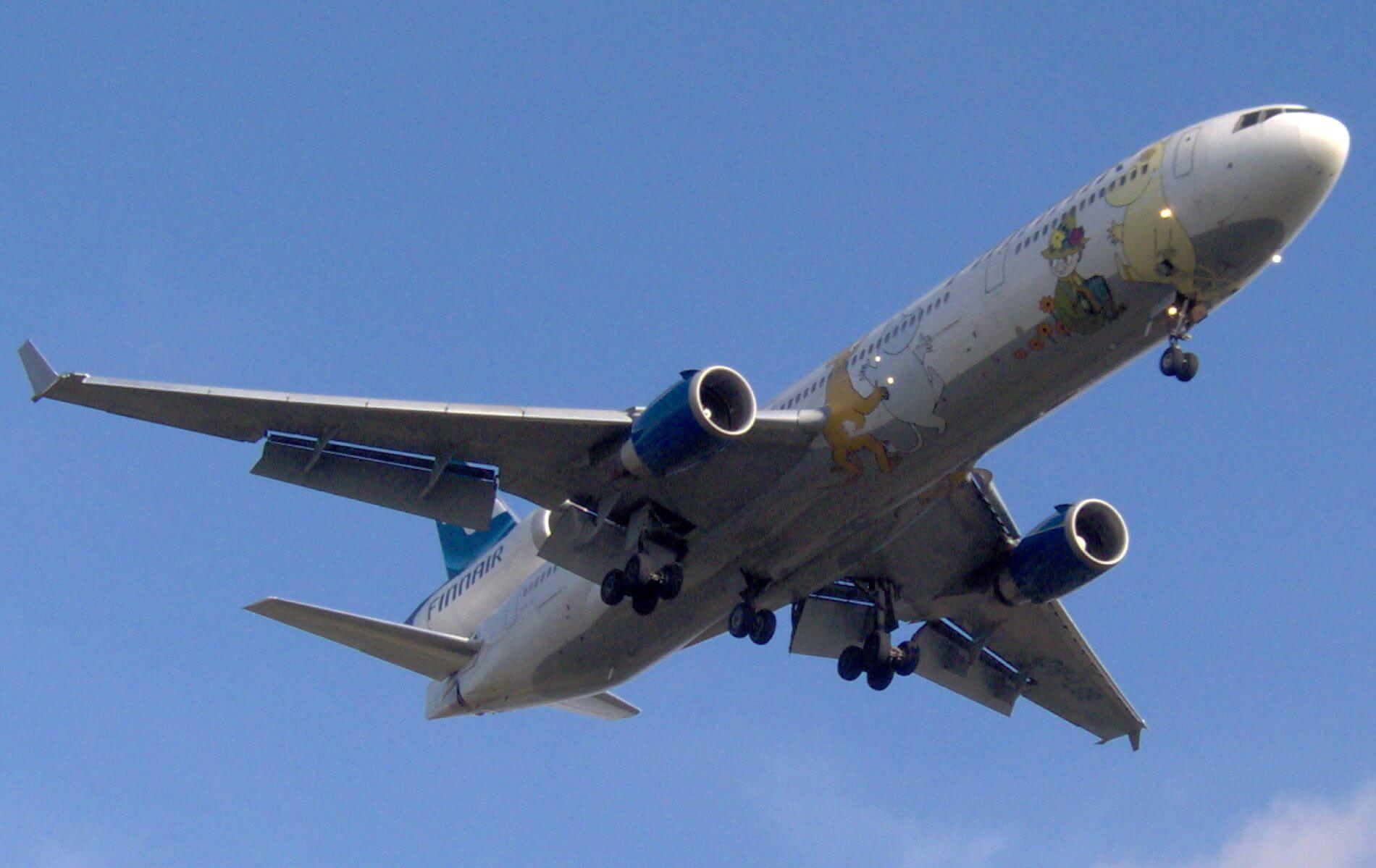
Regular MD-11. Just imagine it stretched (Te00 / Wikipedia photo)
Realizing that the MD-12 project was not going to happen, engineers at McDonnell Douglas scaled down their ambition. In 1994, a simple expanded version of MD-11 was presented, stretching the fuselage to fit 515 passengers in an all-economy configuration. The result was actually bigger, although not as impressive looking as the previous double-decker. It had MD-11’s original wingspan of 65 meters and a stretched length of 71.6 meters. The investment needed was still too high for the company, and the project was scrapped later the same year.
6. Boeing 747-700X: 650 seats
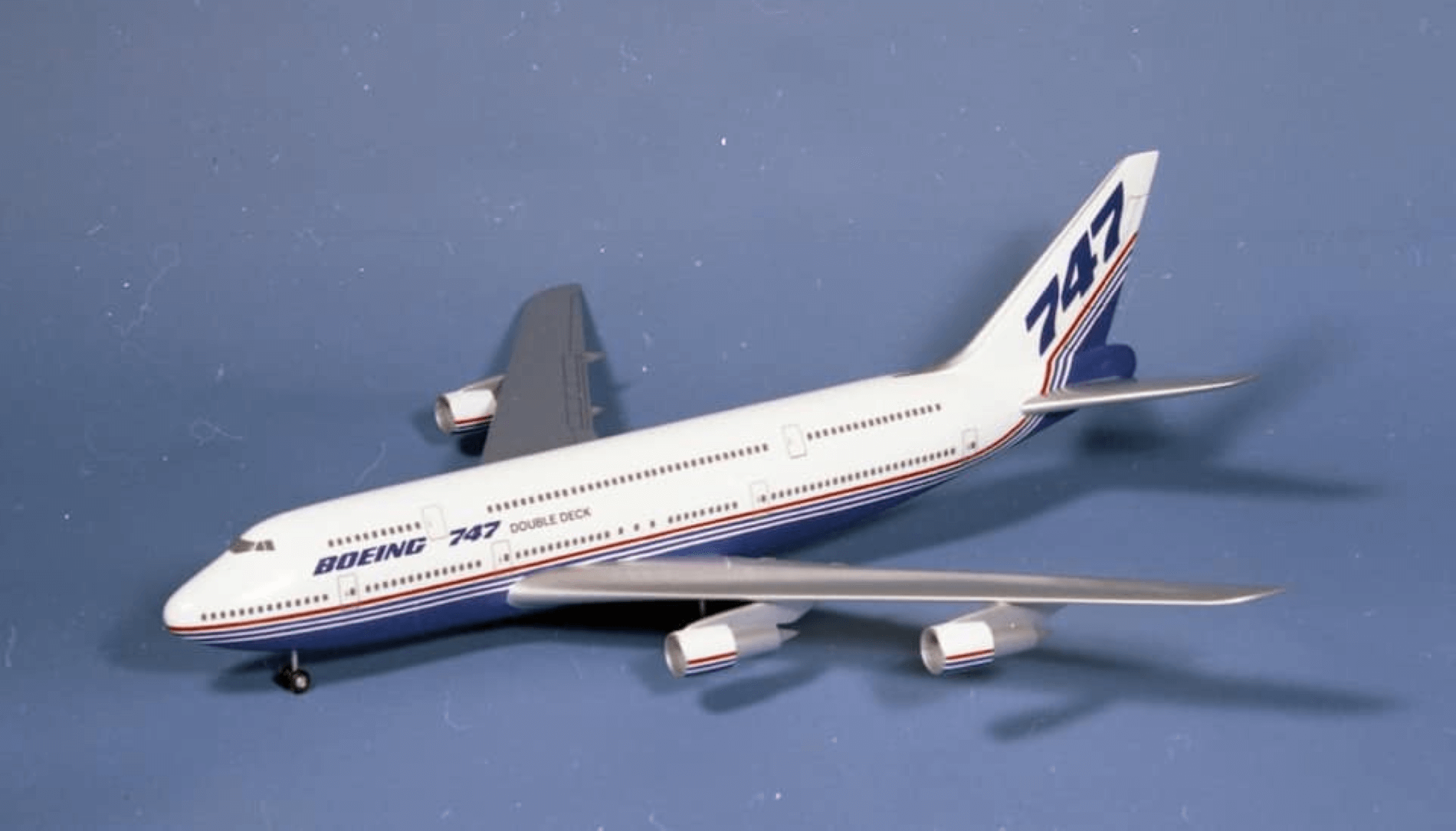
B747 double decker model (Outsider’s Aviation photo)
Boeing was looking for ways to compete in the 500+ seat market too, and one of their answers was to expand the already massive 747. Several projects, collectively named 747X, were proposed, all of them extending the second deck for additional seats. The furthest iteration – which also included a wider fuselage – would carry up to 650 passengers while retaining the range of a regular 747-400.
In the end, Boeing could not find the market suitable for the new jumbo, although several Asian airlines were considered as potential buyers.
5. Boeing New Large Airplane: 900 seats
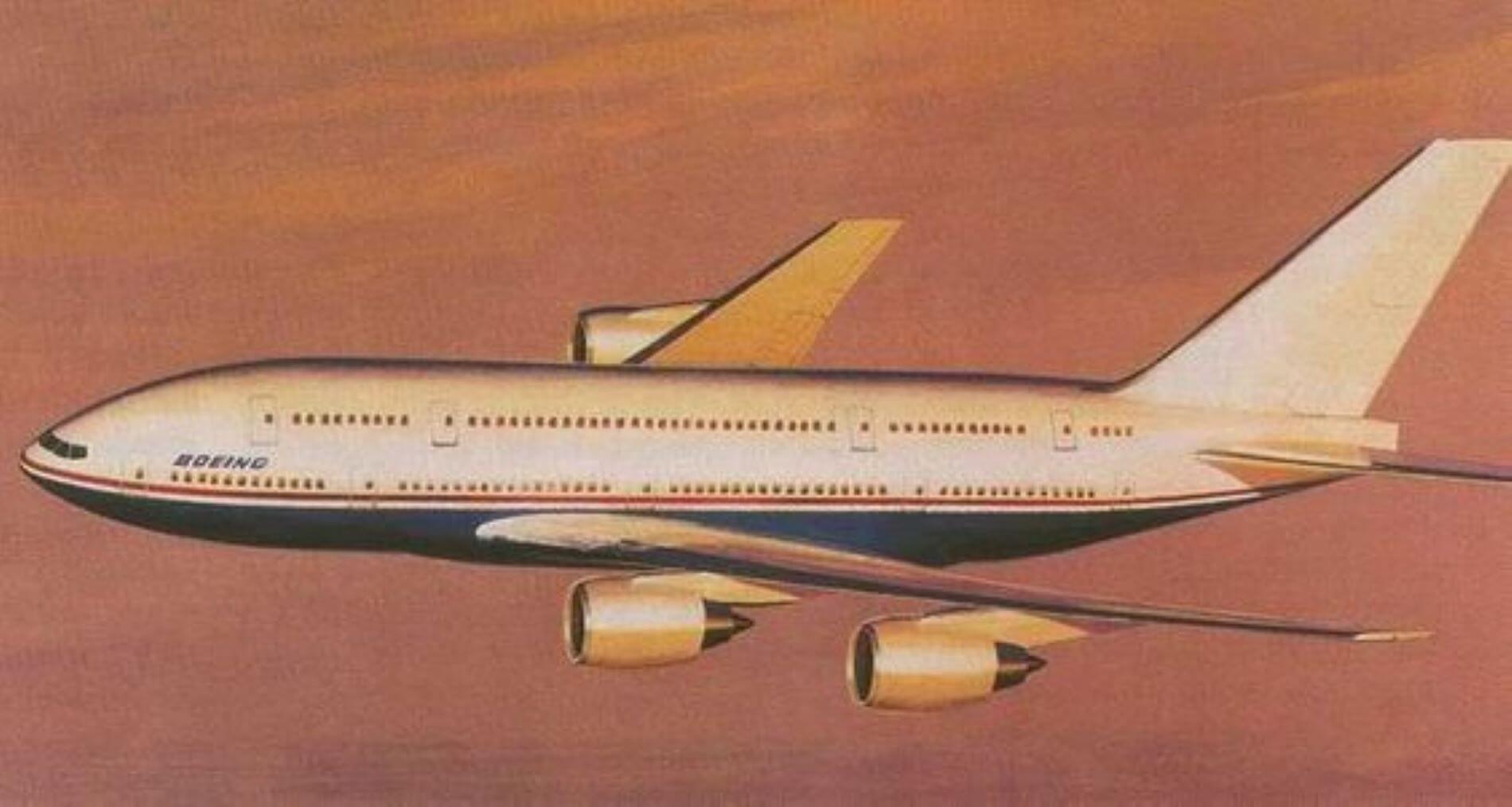
Boeing NLA (Techno-Aviation.com photo)
The 747X was just a second answer to the Airbus A380 project. Boeing’s first move was to make something similar, but bigger. The New Large Airplane (NLA) program, which never even had a proper number attached, should have been the ultimate ticket into the 500+ seat market for the American manufacturer, connecting hubs around the world with its four engines and two decks. A regular three-class configuration would fit 606 passengers (a touch over the A380’s 555) and all-economy layout may have seated over 900 if we try to extrapolate that from the A380’s 853 at its most cramped configuration.
The aircraft was canceled, as Boeing decided the hub-and-spoke model is not the way to go. Even if there was a niche for 500+ seat airplanes, it was not big enough for two competing models.
4. Lockheed Martin VLST: 900 seats
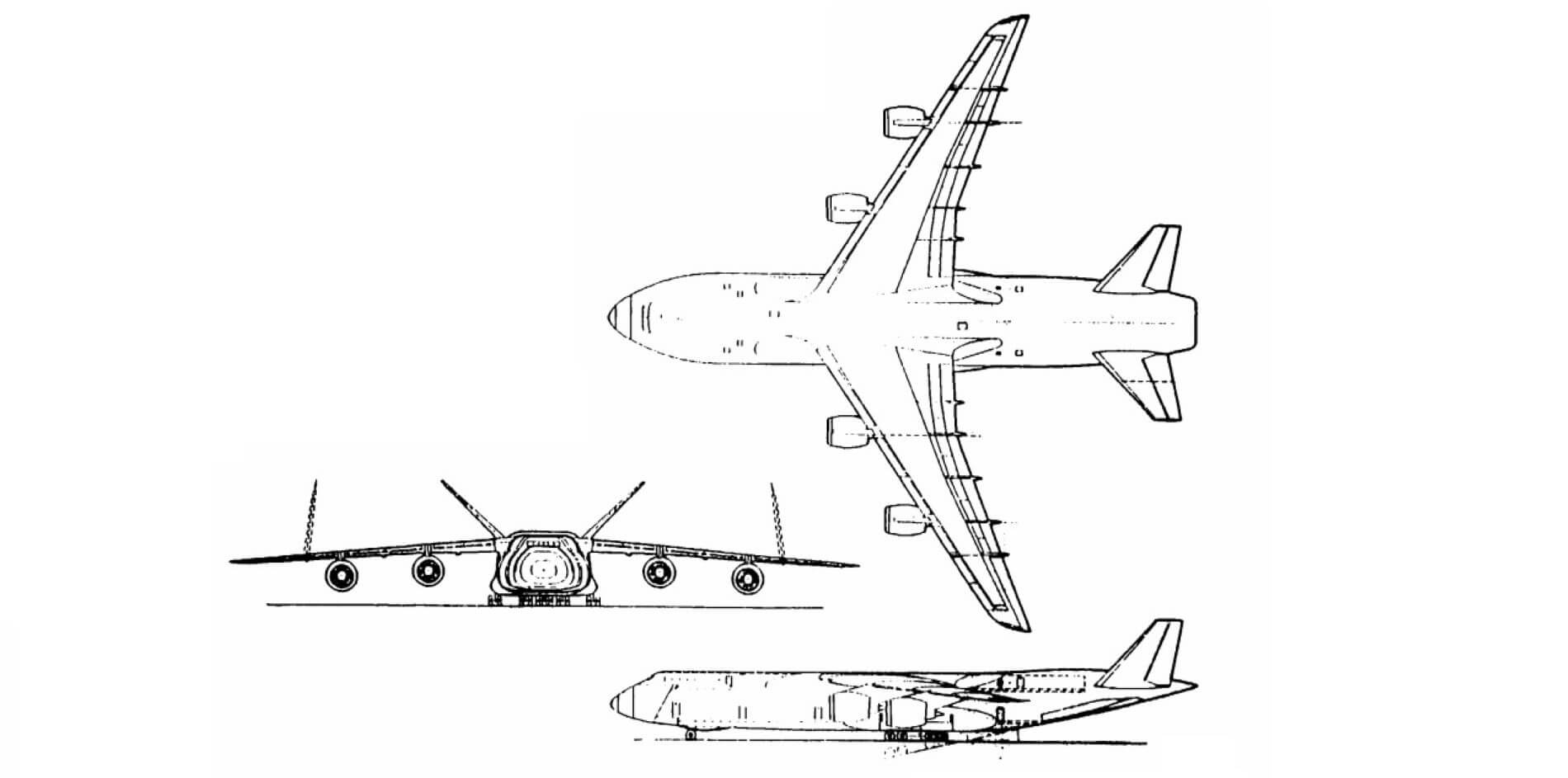
Lockheed Martin VLST project (Lockheed Martin / NASA photo)
Not to be outdone by Boeing and McDonnell Douglas, Lockheed Martin had their own answer to A380: the Very Large Subsonic Transport. Several designs were proposed, including the one with delta wings. The most conservative (and the most realistic) one would have had an oval cross-section body with two decks, 450 seats each in a two-class configuration. Freighter and combi versions, capable of hauling regular shipping containers, were also proposed.
The end result would be just a bit smaller than the Antonov An-225 Mriya, but the logistics of operating passenger aircraft of such capacity and size made it highly impractical. According to the company’s documentation, the entire ground infrastructure would have to be redesigned (something similar, but on a smaller scale, happened with the A380) to accommodate the aircraft, which inflated the already large $8-15 billion development and $200-300 million unit cost even more. In the end, the project was dropped.
3. Airbus A380-900: 960 seats
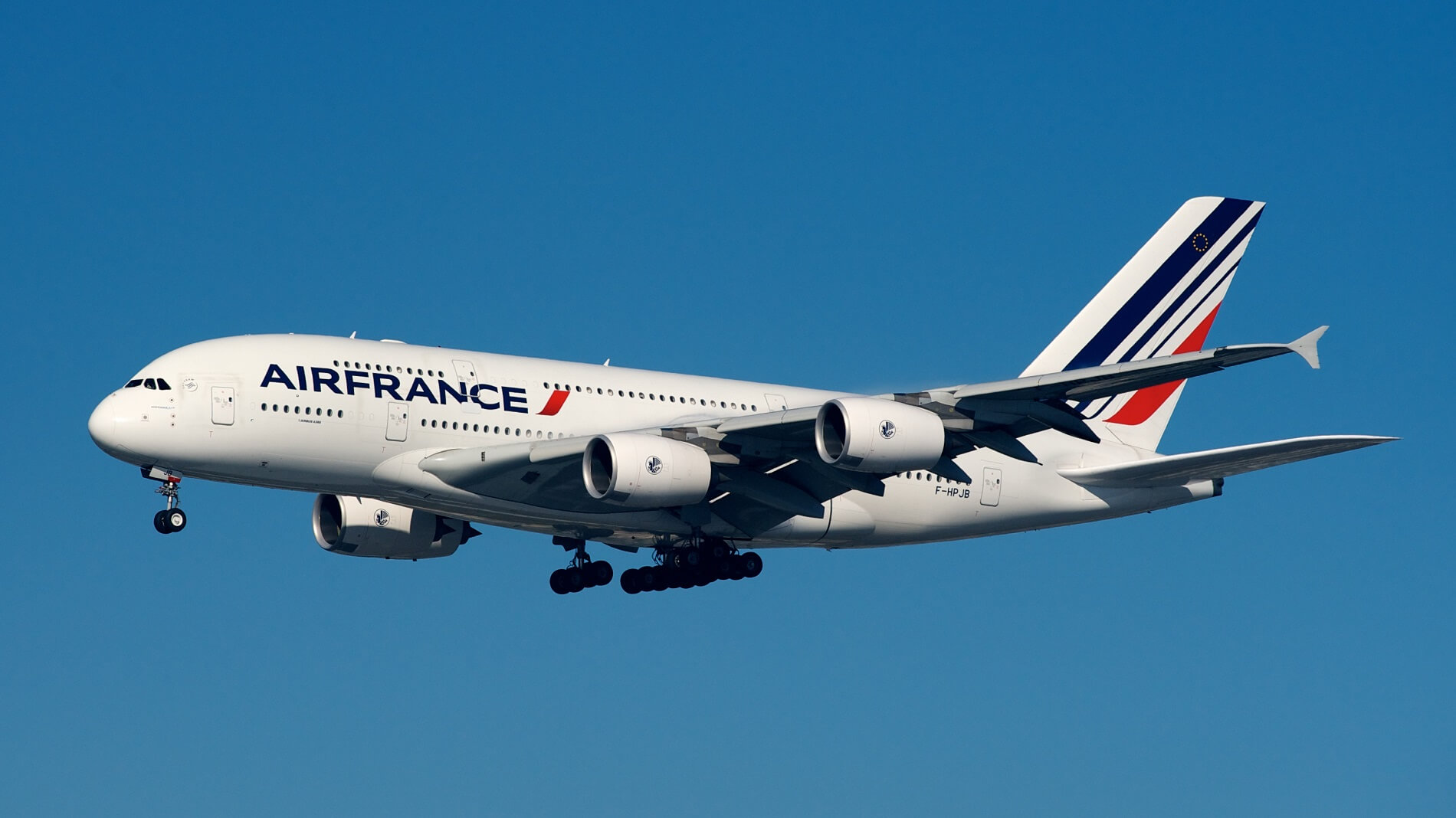
Regular A380. Imagine it stretched too. (BriYYZ / Wikipedia photo)
Airbus A380 was a groundbreaking plane, and a lot of hope was put into it. Had it been successful, Airbus would not stop with the basic modification, as a number of improvements were proposed, including a freighter and several stretched versions. The largest of them, extending original fuselage by several meters, would increase the already large 555 seat capacity to 650, or over 900 in an all-economy configuration.
None of the proposed variants were produced, and in 2019 Airbus announced that it will stop the production of the A380 by 2021.
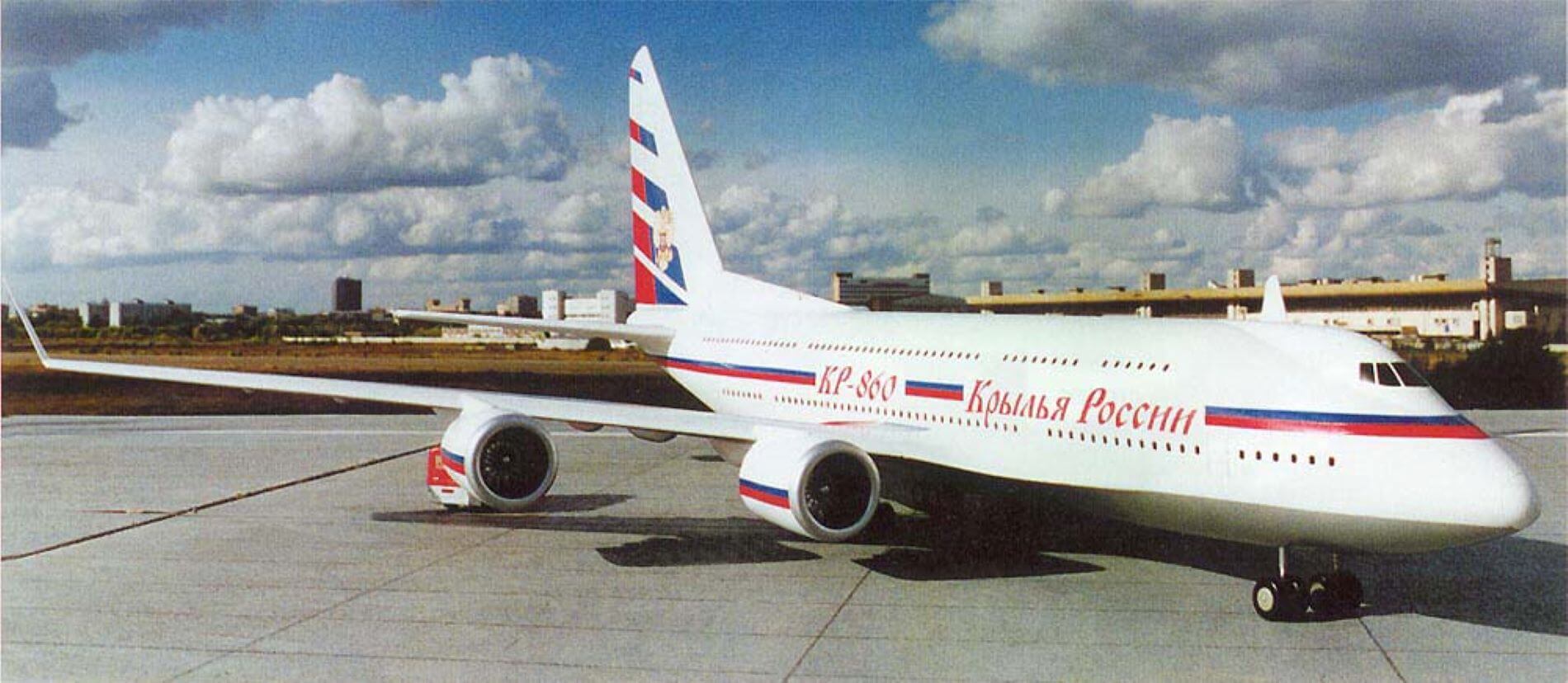
KR-860 model (Testpilot.ru photo)
A developing fight of American and European manufacturing giants for an emerging 500+ seat market was noticed and studied in Russia, where an alternative was designed. It actually went further than many other proposed A380 competitors, as Sukhoi revealed their double-decker in 1999, claiming it could carry 860 passengers in a two-class configuration and up to 1000 passengers in all-economy layout. In addition, the manufacturer pulled out an impressive scale model of the KR-860. The aircraft was intended entirely for the foreign market, as Russia had no domestic routes that would make it profitable. Construction bureaus of Tupolev and Yakovlev would have assisted Sukhoi in the manufacturing, especially producing the liquid gas-powered freighter version.
The development was discontinued some time before 2012, with reasons unpublished, but easily deducible.
1. Tupolev Tu-404: 1214 seats
Tu-404 model (Testpilot.ru photo)
This ultimate Russian giant, overshadowing every other aircraft on this list (and almost everyone beyond it), was designed in the early 90s. As with the Lockheed Martin VLST, several variants were proposed, including a blended wing design powered by six turboprop engines. It, as well as a more conventional version with four underwing jet engines, would carry over 1200 passengers in two decks of all-economy seating. Had the aircraft been completed, it would have served alongside now-dwarfed Tu-304 in a 1000+ seat market of its own, roaming the skies with the wingspan of 110 meters, almost rivaling that of Scaled Composites Stratolaunch.
Reportedly, the project was discussed with several potential buyers, although there is no indication that the development advanced beyond blueprints. Nevertheless, a derivative of this project was briefly considered for Russia’s new super-heavy military transport airplane codenamed PAK DA, before being discarded in favor of a more realistic project loosely based on the aforementioned Tu-304.

